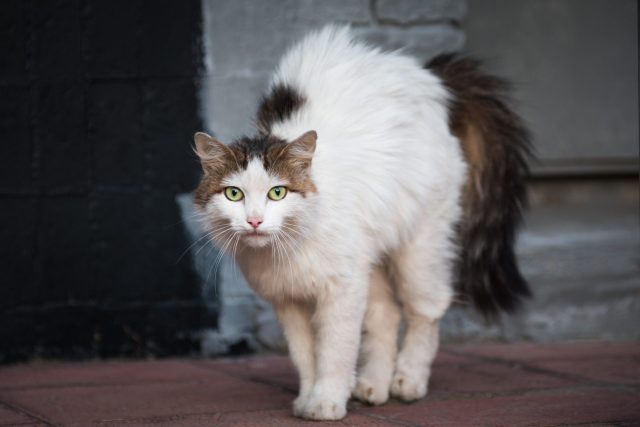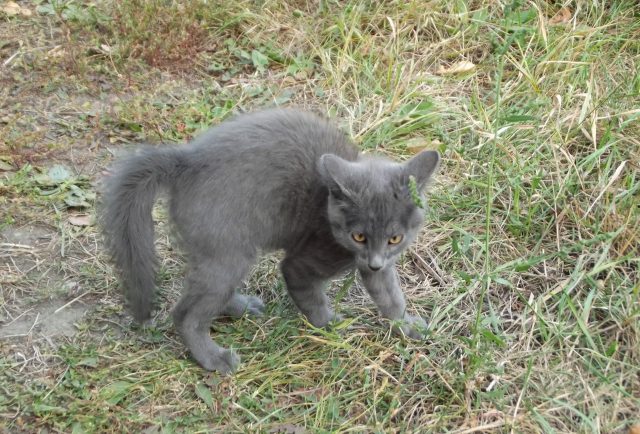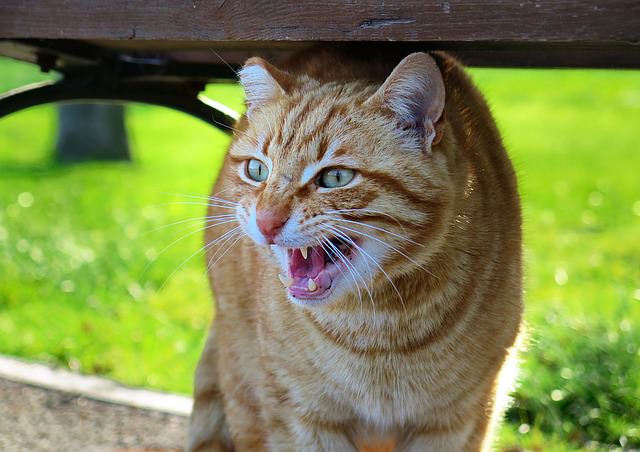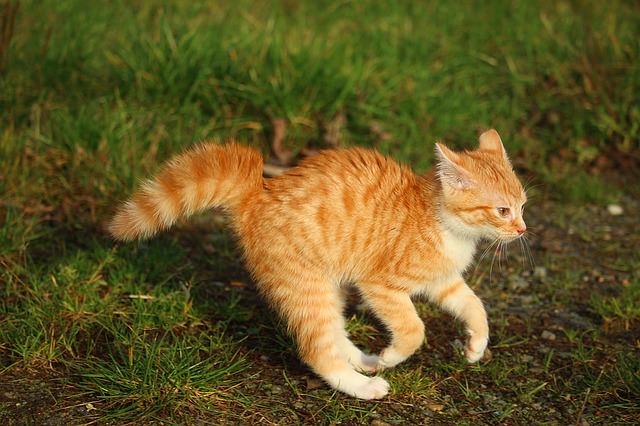Cats, with their enigmatic personalities and quirky behaviors, may not speak our language, but they have their own ways of letting people know what they’re feeling. Feline body language gives insight into the emotions and reactions of our pets, and a cat’s tail tells us much about how our kitties are feeling. And the puffing of the tail is one way cats speak with their wavy appendages. Understanding why cats puff their tails is essential to comprehending feline body language and emotions. This behavior, often referred to as “bottle brush tail” in cats, can be triggered by a variety of emotions including fear, aggression, and even playfulness. By exploring the reasons behind this unique feline reaction – whether a cat is scared, displaying anger, or simply in a playful mood – we gain valuable insights into the complex emotional world of our feline companions.
When a cat puffs their tail, it’s a clear indicator of their emotional state and we would do well the pay attention to what’s being said. Deciphering these cat tail cues is an important part of building a strong bond with your feline. After all, learning their language shows just how much you care!

3 Reasons Cats Puff Their Tails
#1 – Scaredy Cats

Some cats get spooked easily, and a puffed-up tail is often a sign they’re scared or startled by something. It’s an instinctive reaction to make themselves look as big as possible in hopes of discouraging whatever they’re afraid of from coming closer. Their extra fluffy tail will be either straight up or straight down, and they might also arch their back and flatten their ears. Low pitched growling or spitting completes the picture of the classic Halloween cat.
RELATED: How To Really Understand Your Cat’s Body Language
#2 – Angry and Ready to Attack
Less fearful cats often skip the scaredy cat phase and go right into attack mode. They puff their tails for the same reason—to look big and intimidating—but this time it’s meant as a direct warning. Cats may look cute and cuddly, but their claws, teeth, and natural predatory instincts can turn dangerous when they’re threatened. An angry cat will hiss at its opponent and keep its ears held back against its head. The fur on its back may also stand straight up. Most cats prefer an aggressive bluff over a full-out attack, but if their methods of intimidation don’t work, they’ll show they’re not afraid to use those claws.
#3 – Puffy and Playful
This is hard for a lot of cat parents to believe, but a puffed-up tail isn’t always a bad thing. Cats sometimes make their tails puffy when they’re feeling especially happy and playful. It’s most often seen in kittens, but even older cats make the base of their tails look extra fluffy when they’re having fun. It shouldn’t be hard to tell the difference between a stressed cat and a happy cat. Erect ears mean your cat is interested in what’s going on but not threatened, and their whiskers will be pointed forward. Cats also like to wiggle their puffy tails and pounce like predators when they’re playing.
Want to know more about your kitty’s tail? Check out 7 Tail Positions That All Cat Owners Should Know!


